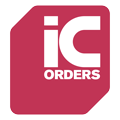An electronic integrated circuit (IC) is a miniaturised electronic circuit that has been manufactured in the surface of a thin substrate of semiconductor material. These circuits are the building blocks of modern electronic devices such as computers, mobile phones, and other digital home appliances.
The invention of the integrated circuit marked a major milestone in the history of electronics, paving the way for the miniaturisation of electronic devices and the advent of the digital age. This article delves into the world of electronic ICs, exploring their history, how they work, their types, and their applications.
The History of Electronic ICs
The concept of an integrated circuit was first proposed by Geoffrey Dummer, a British radar scientist working for the Royal Radar Establishment of the British Ministry of Defence in 1952. However, the first practical ICs were invented by Jack Kilby of Texas Instruments and Robert Noyce of Fairchild Semiconductor independently in 1958 and 1959 respectively.
These early ICs were relatively simple devices, but they laid the groundwork for the complex microprocessors and memory chips that we use today. Over the decades, the technology has evolved and improved, leading to ICs that are smaller, faster, and more efficient than their predecessors.
How Electronic ICs Work
At its most basic level, an electronic IC consists of transistors, resistors, capacitors, and other components that are interconnected to perform a specific function. These components are fabricated on a thin slice of silicon, known as a chip, using a process called photolithography.
The operation of an IC is based on the principles of semiconductor physics. The transistors in the IC act as electronic switches that can be turned on or off, allowing the circuit to process digital information. The resistors and capacitors, on the other hand, are used to control the flow of current and to store electrical charge, respectively.
Photolithography Process
The photolithography process involves coating the silicon wafer with a light-sensitive material called photoresist. The wafer is then exposed to ultraviolet light through a mask that defines the pattern of the circuit. The exposed areas of the photoresist are chemically altered, allowing them to be etched away to create the desired pattern on the silicon wafer.
After the etching process, the wafer is subjected to a series of chemical treatments to form the transistors and other components. The final step is the deposition of a layer of metal to form the interconnections between the components. The completed wafer is then cut into individual chips, each of which is a complete integrated circuit.
Types of Electronic ICs
There are several types of electronic ICs, each designed for a specific purpose. The most common types are digital ICs, analogue ICs, and mixed-signal ICs.
Digital ICs
Digital ICs are used in devices that work on digital signals. They include microprocessors, memory chips, and logic ICs. Microprocessors are the brains of computers and other digital devices, while memory chips are used to store data. Logic ICs, on the other hand, are used to perform simple logical functions such as AND, OR, and NOT operations.
Analogue ICs
Analogue ICs are used in devices that process analogue signals, such as audio and video equipment. They include operational amplifiers, voltage regulators, and power management circuits. Operational amplifiers are used to amplify signals, while voltage regulators are used to maintain a constant voltage level. Power management circuits, on the other hand, are used to control the power supply to other components in a device.
Mixed-Signal ICs
Mixed-signal ICs are a combination of digital and analogue ICs on a single chip. They are used in devices that need to process both digital and analogue signals, such as mobile phones and digital cameras.
Applications of Electronic ICs
Electronic ICs are used in a wide range of applications, from consumer electronics to industrial machinery. They are the backbone of the digital age, enabling the development of devices that are smaller, faster, and more powerful than ever before.
In the consumer electronics sector, ICs are used in virtually every device, from televisions and mobile phones to gaming consoles and home appliances. In the industrial sector, they are used in automation systems, robotics, and process control equipment. In the automotive industry, they are used in engine control units, navigation systems, and safety systems. In the telecommunications sector, they are used in network equipment, modems, and routers.
With the advent of the Internet of Things (IoT), the demand for electronic ICs is expected to grow even further. These tiny circuits are the key to connecting billions of devices, creating a world where everything is interconnected and smart.
Conclusion
Electronic integrated circuits have revolutionised the world of electronics, enabling the development of devices that are smaller, faster, and more powerful than ever before. From their humble beginnings in the 1950s, they have evolved into the backbone of the digital age, powering everything from computers and mobile phones to industrial machinery and automotive systems.
As technology continues to advance, the role of electronic ICs is set to become even more important. With the rise of the Internet of Things and the advent of smart cities, these tiny circuits are poised to play a key role in shaping the future of our digital world.
As you’ve seen, electronic integrated circuits are at the heart of the technological advancements that shape our lives. If you’re in need of high-quality ICs to power your projects or to complete your Bill of Materials (BOM), look no further than IC Orders. With over 12 years of experience in the electronic component market, we stand ready as your independent distributor to help you navigate both the opportunities and challenges of sourcing the right components. Let us assist you in finding the exact part numbers you need. Contact Us for A Quote Today and experience our commitment to completing your BOM with precision and efficiency.
